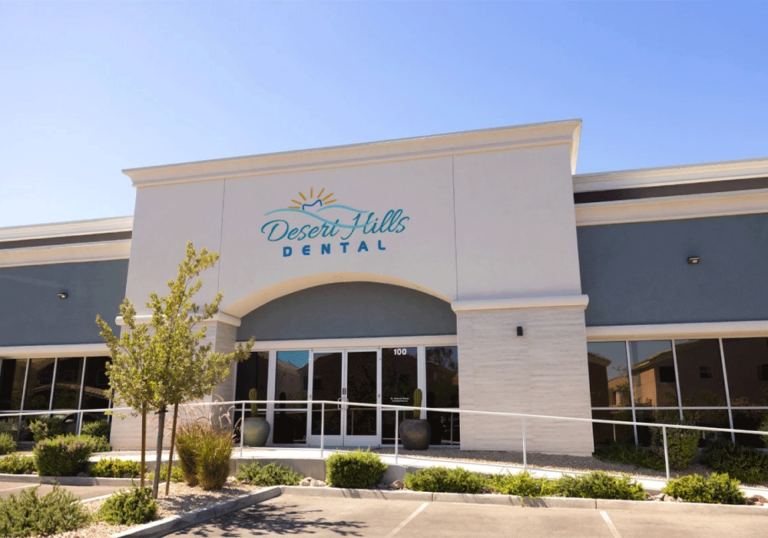Fillings & Sealants
Tooth decay and cavities are common dental issues. Receiving a tooth-colored filling to restore your tooth helps prevent the problem from developing into something worse.
Tooth Colored Restorations in Las Vegas, NV
What is a tooth filling?
A filling is a simple restoration procedure primarily used to restore cavities or other mild decay or deterioration. Fillings are extremely common and have a high success rate. We offer composite fillings because they are tooth-colored and appear more natural.
What are dental sealants?
Sealants are a thin coating painted on teeth to protect them from cavities, they are typically used in children but can be used in adults as well. This preventative treatment lowers the chances of developing cavities in the deep chewing surfaces of your back teeth. Because these grooves, pits, and fissures are narrow and difficult to clean with a toothbrush, they’re some of the areas that develop cavities first. Just another reason why attending routine dental checkups is so important! By placing sealants over your chewing surfaces, we essentially create a shallower area that’s smoother and easier to clean with a toothbrush. That way, little to no residual bacteria is left inside the grooves following your typical brushing routine. Sealants are a quick and affordable option to prevent cavities and tooth fillings.

-
How do cavity fillings work?
Cavity and tooth fillings are required because of the deterioration of holes left in the tooth due to tooth decay. Left unchecked, the decay will continue to spread and damage the tooth. During the filling procedure, dentists clean away the decay inside the cavity, usually with a drill to prevent further damage. But this doesn’t fix the damage that has already been created, so a filling is necessary. The intent of the filling is to replace the part of the tooth that is missing or destroyed by tooth decay. The dentist molds the filling to match the shape of the surrounding tooth, which restores the strength and integrity of the tooth and prevents further decay from happening.
-
What types of filling materials are available?
Several types of materials are available for fillings, including gold, porcelain, silver amalgam (which consists of mercury mixed with silver, tin, zinc, and copper), tooth-colored plastic, and composite resin fillings. There is also a material that contains glass particles known as glass ionomer. This material is used in ways similar to composite resin fillings. We offer tooth-colored plastic and composite resin fillings.
-
Should I have tooth sensitivity after a filling?
When you get a filling, the area around the infected tooth is numbed by your dentist. As a result, you likely won’t feel anything for an hour or two after your appointment but once the numbing wears off it is typical to feel pain in your teeth and gums.
Pain is common when drinking or eating anything that is hot or cold. It is also common when you brush or floss near the infected tooth. Tender gums are also typical after getting a cavity filled.
Minimize Tooth Sensitivity
You can reduce the sensitivity in your teeth and gums by:
- Taking an anti-inflammatory drug, like Advil or Motrin
- Temporarily avoiding hot, cold, or acidic foods and beverages such as fruit, wine, and yogurt
- Brush and floss more gently
- Use a desensitizing toothpaste like Sensodyne or Colgate Sensitive
-
How long does a dental sealant last?
Dental sealants have been used and proven to be effective since the 1970s. They are mainly placed on chewing surfaces and are effective in preventing tooth decay. Their lifespan can vary, but many last years—and it is possible to place a new sealant on a tooth if the sealant wears off. It is important to note that sealants only protect the surface of the tooth they are placed on. Using fluoride and other preventative cleaning practices will still help protect all the surfaces of the tooth from decay and cavities.
-
Who qualifies for dental sealants?
Sealants are designed for healthy teeth that have yet to develop cavities. In most cases, they’re placed on permanent molars shortly after they come in (around the ages of 6 and 12, respectively). However, adults can choose to get sealants too. It may be that their childhood sealants came off or they’re starting to develop cavities in other teeth for the first time.
Investing in affordable dental sealants can help you prevent more extensive (and expensive) oral health treatments in the future.
More Questions?
If you have more questions about fillings and sealants, or if you would like to schedule an appointment, please use the link provided below. We look forward to meeting you!
